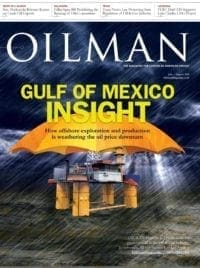The Federal Energy Regulatory Commission (FERC) has determined that approval of the Lake Charles Liquefaction Project would have some adverse environmental effects, but most of those effects would be reduced to less-than-significant levels with the implementation of certain mitigation measures.
FERC said in an April draft environmental impact statement (EIS) for the project that it recommended 100 mitigation measures that Lake Charles LNG should implement for the project in addition to the measures originally proposed by the company.
“We determined that these measures are necessary to reduce adverse impacts associated with the project and, in part, are basing our conclusions on implementation of these measures,” FERC said in the draft EIS. “Therefore, we are recommending that these mitigation measures be attached as conditions to any authorization issued by [FERC].”
The draft EIS addresses the potential environmental effects of the construction, modification, and operation of Lake Charles LNG’s proposal to develop natural gas liquefaction and LNG export capabilities through construction of a new liquefaction facility and modifications to the existing Trunkline LNG Terminal in Calcasieu Parish, La. In addition, the company proposed construction of facilities necessary to provide natural gas supplies to the proposed liquefaction facility, including two new pipelines – Mainline Connector and Mainline 200-3 Loop – and a new compressor station – Compressor Station 203-A.
The U.S. Army Corps of Engineers, U.S. Coast Guard, U.S. Department of Energy, U.S. Fish and Wildlife Service, and U.S. Department of Transportation participated as cooperating agencies in the preparation of the draft EIS.
As proposed, the project includes construction of three liquefaction trains, each with a production capacity sufficient to produce 5.48 million metric tons per year of LNG for export and about 18 miles of 24-inch-diameter and 42-inch-diameter natural gas pipeline.
Capacity for the proposed project is contracted by BG LNG.
FERC said that its determination in the draft EIS was based on several factors, including:
- Construction and operation of the proposed liquefaction facility would not result in increased LNG vessel traffic
- About 6.5 miles of the proposed new pipelines would be looped and would overlap with the adjacent existing pipeline right of way, which would minimize new disturbance
- FERC staff determined that no historic properties would be affected by the project
- An environmental inspection program would be implemented to ensure compliance with the mitigation measures that become conditions of the FERC authorization
The comment period on the draft EIS ended in June. FERC will use comments submitted on the draft EIS to prepared a final EIS. Once the final EIS is issued, FERC will take into consideration recommendations in the final EIS when making a decision on the project.




